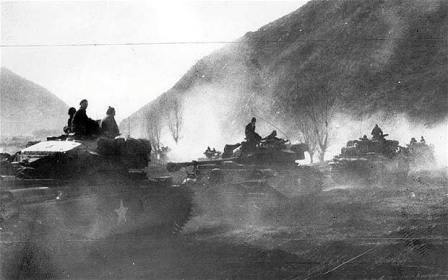The Battle of the Imjin River took place 22–25 April 1951 during the Korean War.
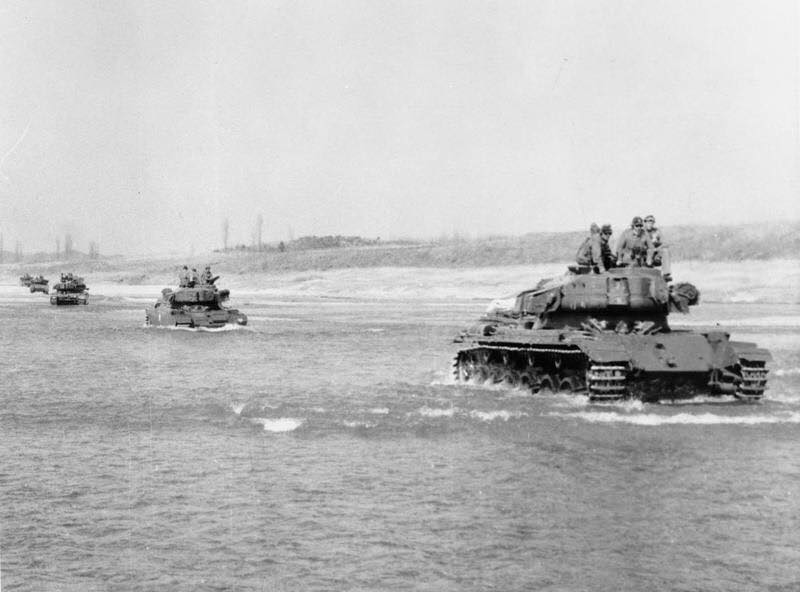
Troops from the Chinese People’s Volunteer Army attacked United Nations (UN) positions on the lower Imjin River in an attempt to achieve a breakthrough and recapture the South Korean capital Seoul.
The attack was part of the Chinese Fifth Phase Campaign, also known as the Chinese Spring Offensive, the aim of which was to regain the initiative on the battlefield after a successful UN counter-offensive in March 1951 had allowed UN forces to establish themselves beyond the 38th parallel at Line Kansas.
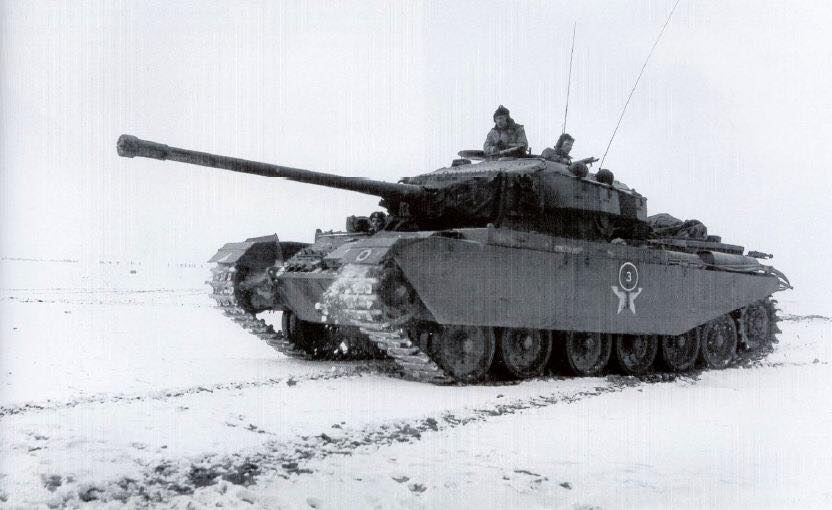
The section of the UN line where the battle took place was defended primarily by British forces of the 29th Infantry Brigade, consisting of three British and one Belgian infantry battalions (Belgian United Nations Command) supported by tanks of C Squadron 8th King’s Royal Irish Hussars and artillery.
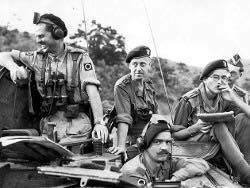
Despite facing a greatly numerically superior enemy, the brigade held its general positions for three days.
When the units of the 29th Infantry Brigade were ultimately forced to fall back, their actions in the Battle of the Imjin River together with those of other UN forces, for example in the Battle of Kapyong, had blunted the impetus of the Chinese offensive and allowed UN forces to retreat to prepared defensive positions north of Seoul, where the Chinese were halted.
“Though minor in scale, the battle’s ferocity caught the imagination of the world”, especially the fate of the 1st Battalion, The Gloucestershire Regiment, which was outnumbered and eventually surrounded by Chinese forces on Hill 235, a feature that became known as Gloster Hill.
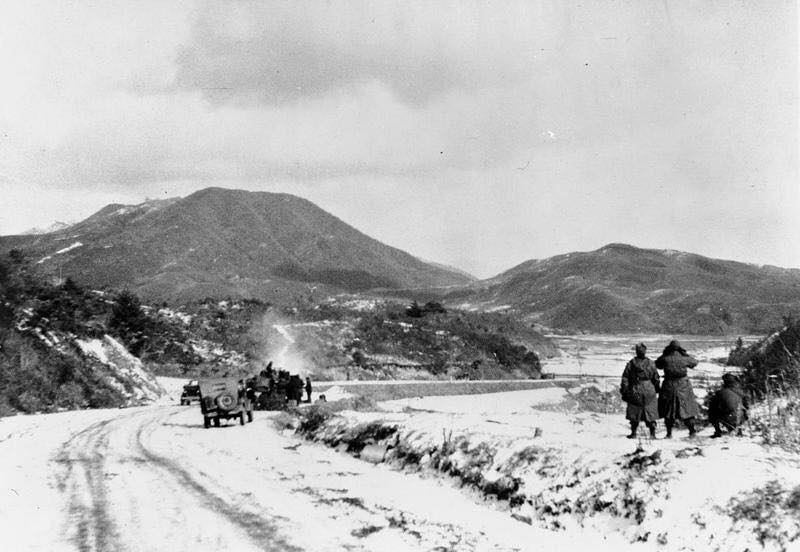
The stand of the Gloucestershire battalion, together with other actions of the 29th Brigade in the Battle of the Imjin River, has become an important part of British military history and tradition.
UN Forces
On 22 April the front line in the west along with Lines Kansas and Utah was held by the American I Corps comprising, from west to east, the South Korean (ROK) 1st Division, the American 3rd Division with the British 29th Brigade under command, the American 25th Division with the Turkish Brigade under command, and the American 24th Division.
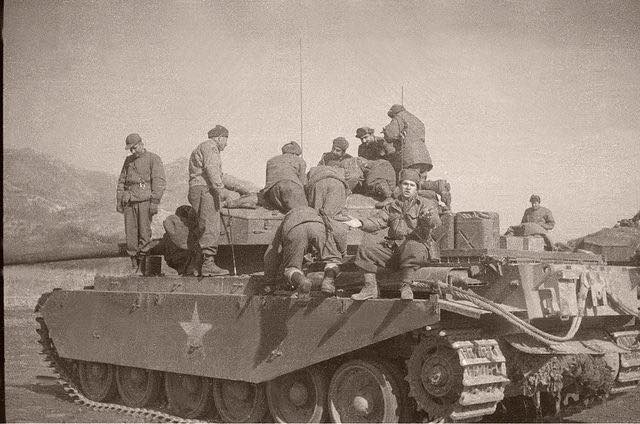
The 29th Infantry Brigade, commanded by Brigadier Tom Brodie, consisted of the 1st Battalion Gloucestershire Regiment (Glosters), under Lieutenant-Colonel James P. Carne; the 1st Battalion Royal Northumberland Fusiliers (Fusiliers), under Lieutenant-Colonel Kingsley Foster; the 1st Battalion Royal Ulster Rifles (Rifles), under the temporary command of Major Gerald Rickord; and the Belgian Battalion, under Lieutenant-Colonel Albert Crahay (700 men), to which Luxembourg’s contribution to the UN forces was attached.
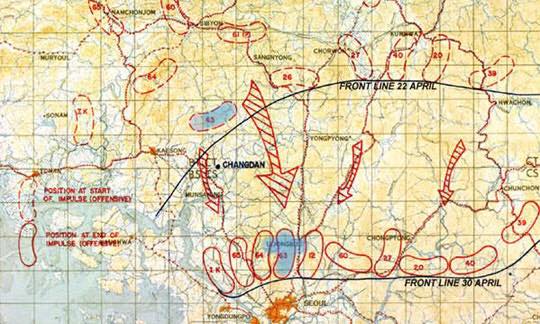
The brigade was supported by the 25 pounders of 45 Field Regiment Royal Artillery (RA) commanded by Lieutenant-Colonel MT Young, the 4.2-inch mortars of 170 Heavy Mortar Battery RA, the Centurion tanks of C Squadron 8th King’s Royal Irish Hussars under the command of Major Henry Huth, and by 55 Squadron Royal Engineers.
The four battalions of the 29th Brigade covered a front of 12 miles (19 km). Gaps between units had to be accepted because there was no possibility of forming a continuous line with the forces available. “Brigadier Brodie determined to deploy his men in separate unit positions, centred upon key hill features”.
On the left flank, the Glosters were guarding a ford over the Imjin 1 mile (1.6 km) east of the ROK 1st Division; the Fusiliers were deployed near the centre, around 2 miles (3.2 km) northeast of the Glosters; the Belgians, occupying a feature called Hill 194 on the right, were the only element of the 29th Brigade north of the river.
Their connection with the rest of the brigade depended on two pontoon bridges about half a mile apart. These bridges connected the Belgians with Route 11, the 29th Brigade’s main line of supply and communication.
The Ulster Rifles served as the brigade’s reserve and were deployed along Route 11. Extensive defensive preparations were not completed because the British expected to hold the position for only a short time.
Neither minefields deeply dug shelters nor extensive wire obstacles had been constructed. The British position on the Imjin river “was deemed safe” but vulnerable in case of an attack.
Chinese forces
Chinese Spring Offensive, April 1951
The commander-in-chief of the Chinese and North Korean communist forces in the Field, General Peng Dehuai, planned to “wipe out…the American 3rd Division…the British 29th Brigade and the 1st Division of the Puppet Army…after this we can wipe out the American 24th Division and 25th Division”, and promised the capture of Seoul as a Mayday gift to Mao.
To achieve the objective Peng planned to converge on Seoul with three Chinese army groups and a North Korean corps; a total strength of some 305,000 men. The III and IX Army Groups were to attack the right flank of the American 3rd Division and the 24th and 25th Divisions on Line Utah, east of the Imjin where it turned north.
The XIX Army Group on the Chinese right flank, west of the Imjin River where it turned north, were to attack the remainder of the 3rd Division and the ROK 1st, Division. On the XIX Army Group front, the North Korean I Corps and Chinese 64th Army would attack the ROK 1st Division, while the 63rd Army would attack their left, pitting it against 29th Brigade. The 63rd Army comprised three divisions, the 187th, 188th and 189th, with each division comprising three regiments, each of which comprised three battalions. Some 27,000 men in 27 battalions would be attacking 29th Brigade’s four battalions, albeit in echelon, one division after the other.
The Battle – The first night
The battle opened on the night of 22 April 1951. A Chinese patrol on the north bank of the river moved around the Belgians on Hill 194 and continued to advance east towards the two bridges on which the Belgians depended. Elements of the 29th Brigade’s reserve, the 1st RUR, were deployed forward at about 10 pm to secure the crossing but were soon engaged by Chinese forces trying to cross the river.
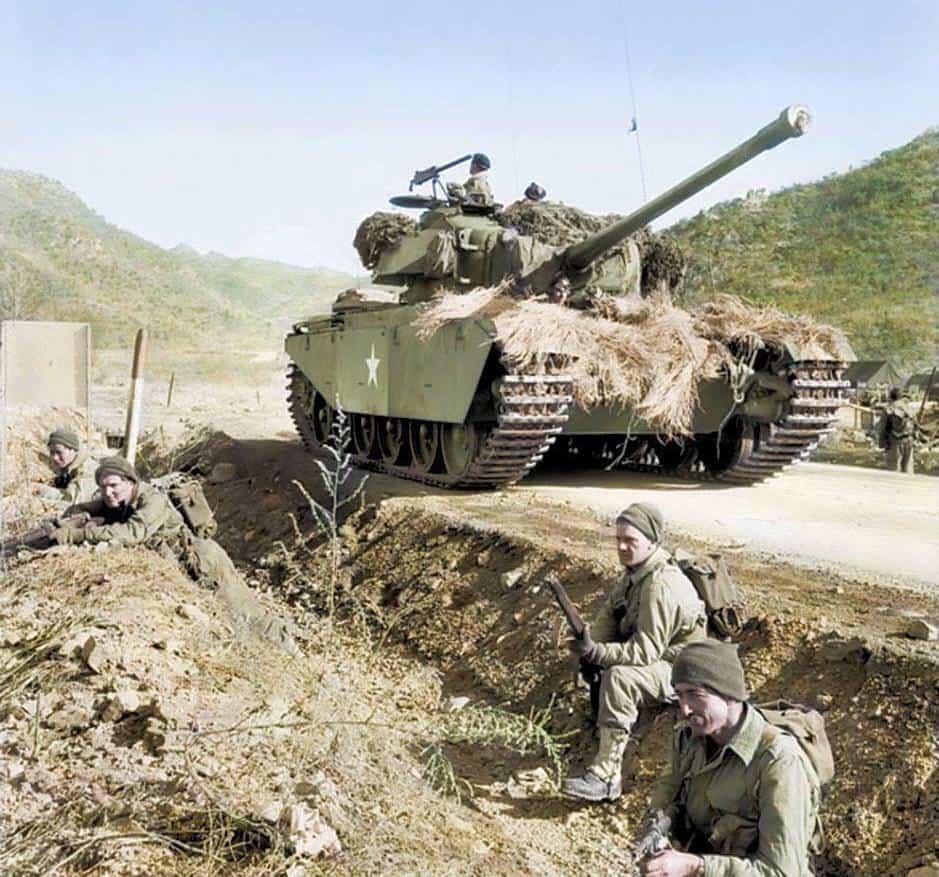
The Royal Ulster Rifles were unable to secure the bridges. This development meant that the Belgian battalion on the north bank of the river was in danger of being isolated from the rest of the 29th Brigade.
Chinese forces following the initial patrol either attacked the Belgian positions on Hill 194 or continued their advance towards the bridges. Those who were able to cross the Imjin attacked the Fusiliers’ right rear company, Z Company, on Hill 257, a position close to the river and almost directly south of the crossings.
Further downstream, Chinese forces managed to ford the Imjin and attacked the Fusiliers’ left forward company, X Company, on Hill 152. The retreat of X Company from Hill 152 had serious consequences for Y Company, which occupied the right forward position of what can be described as a squarish fusilier position marked out by four widely spaced company perimeters at the corners.
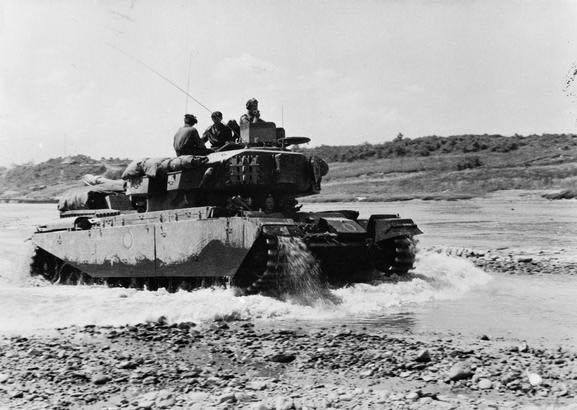
Although Y Company was not attacked directly, Chinese forces threatened its flanks by forcing Z and X Companies from their positions.
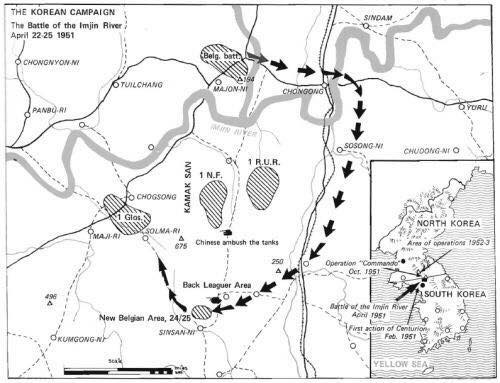
After unsuccessful British attempts to regain those lost positions on Hill 257 and 194, Y Company’s position was abandoned, the retreat being covered by ‘C’ Squadron, 8th Hussars.
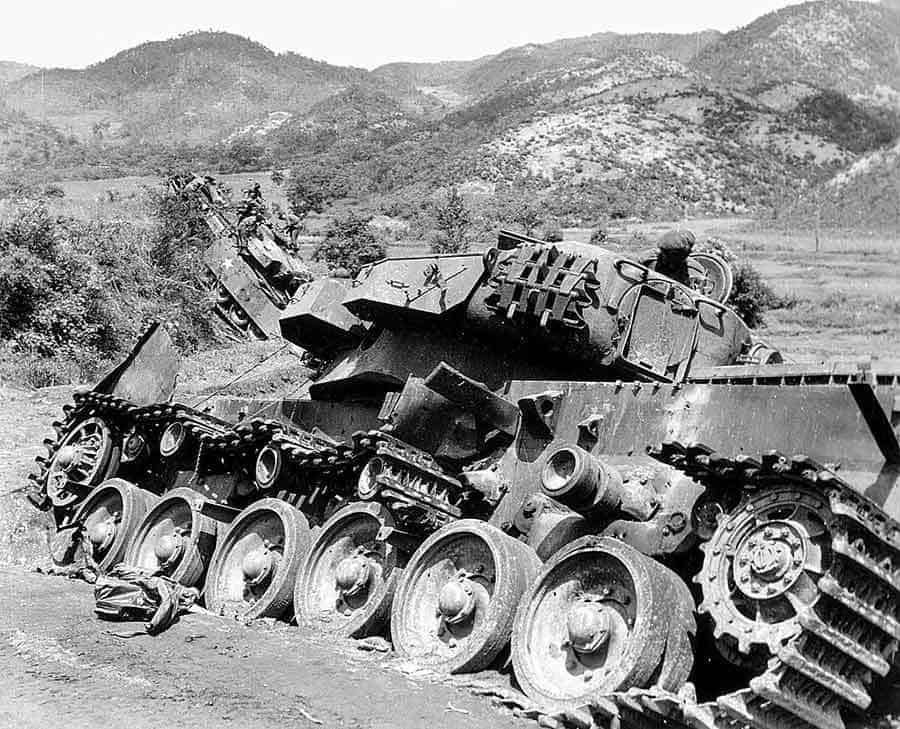
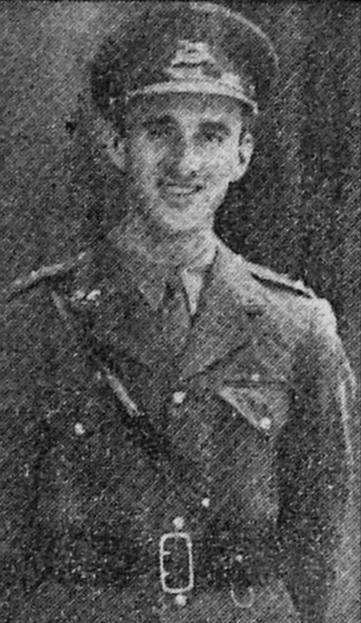
3rd The King’s Own Hussars
attached to: 8th King’s Royal Irish Hussars
Died on Thursday 08 February 1951

